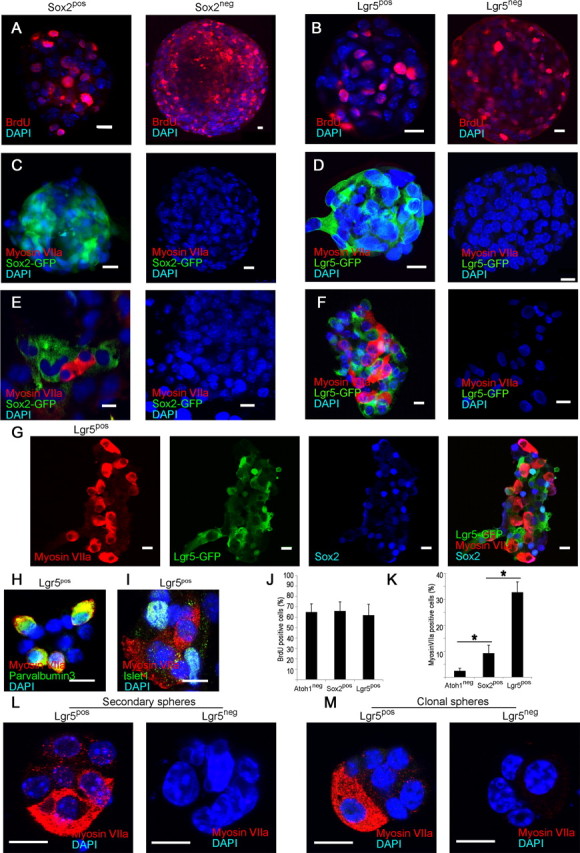Figure 3.

Hair cell generation only from Lgr5-expressing neurospheres. A, Neurospheres formed by the Sox2pos and Sox2neg fractions incorporated BrdU. B, Sorted Lgr5pos and Lgr5neg cells formed neurospheres that incorporated BrdU. C, Neurospheres formed by the Sox2pos and Sox2neg fractions did not contain hair cells (Myosin VIIa). D, Neurospheres made from sorted Lgr5pos and Lgr5neg cells showed no labeling for myosin VIIa. E, Myosin VIIa-positive cells were observed upon differentiation of neurospheres made from the Sox2pos cells but not the Sox2neg cells. F, After differentiation, neurospheres made from Lgr5pos cells generated myosin VIIa-positive cells. No hair cells were observed upon differentiation of neurospheres made from the Lgr5neg cells. G, Differentiated Lgr5pos neurospheres retained Lgr5 and Sox2 surrounding the myosin VIIa-positive cells that lost expression of Lgr5. H, Myosin VIIa-staining cells from Lgr5pos neurospheres costained for parvalbumin 3. I, Cells surrounding the myosin VIIa-positive cells expressed islet1. J, Neurospheres made from Atoh1 (negatively sorted), or Sox2 or Lgr5 (positively sorted) cells had similar rates of cell division. K, Increasing capacity for hair cell differentiation was found in neurospheres made from Atoh1, Sox2 or Lgr5-sorted cells. Means ± SEM are shown, n = 3. Scale bars, 10 μm. L, Secondary neurospheres made by sorting Lgr5pos cells differentiated into myosin VIIa-positive hair cells. No hair cells were observed after differentiation of secondary neurospheres from Lgr5neg cells. M, Clonal neurospheres from single Lgr5pos but not from single Lgr5neg cells from cochlear sensory epithelium gave rise to hair cells upon differentiation.
